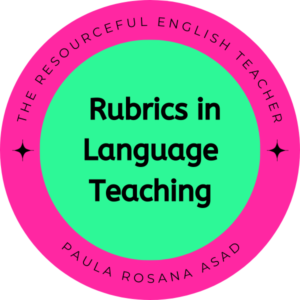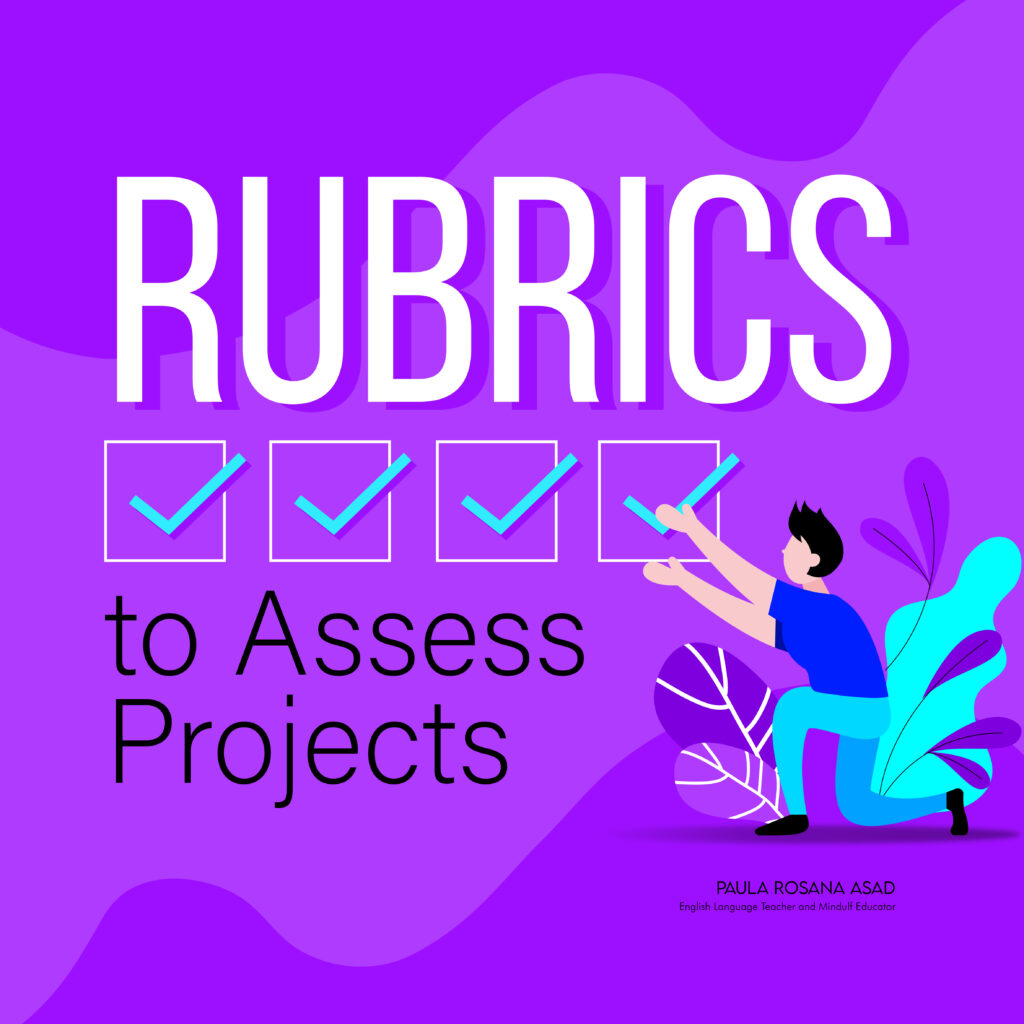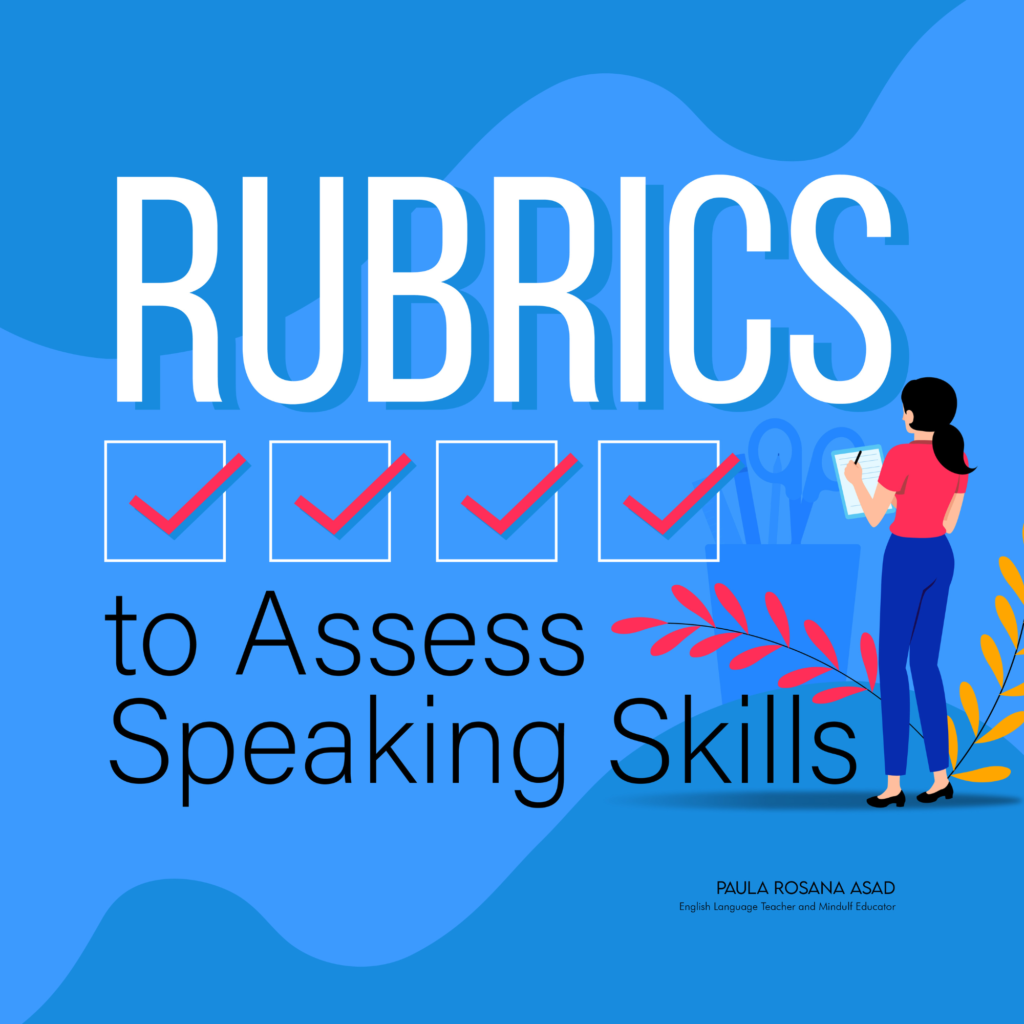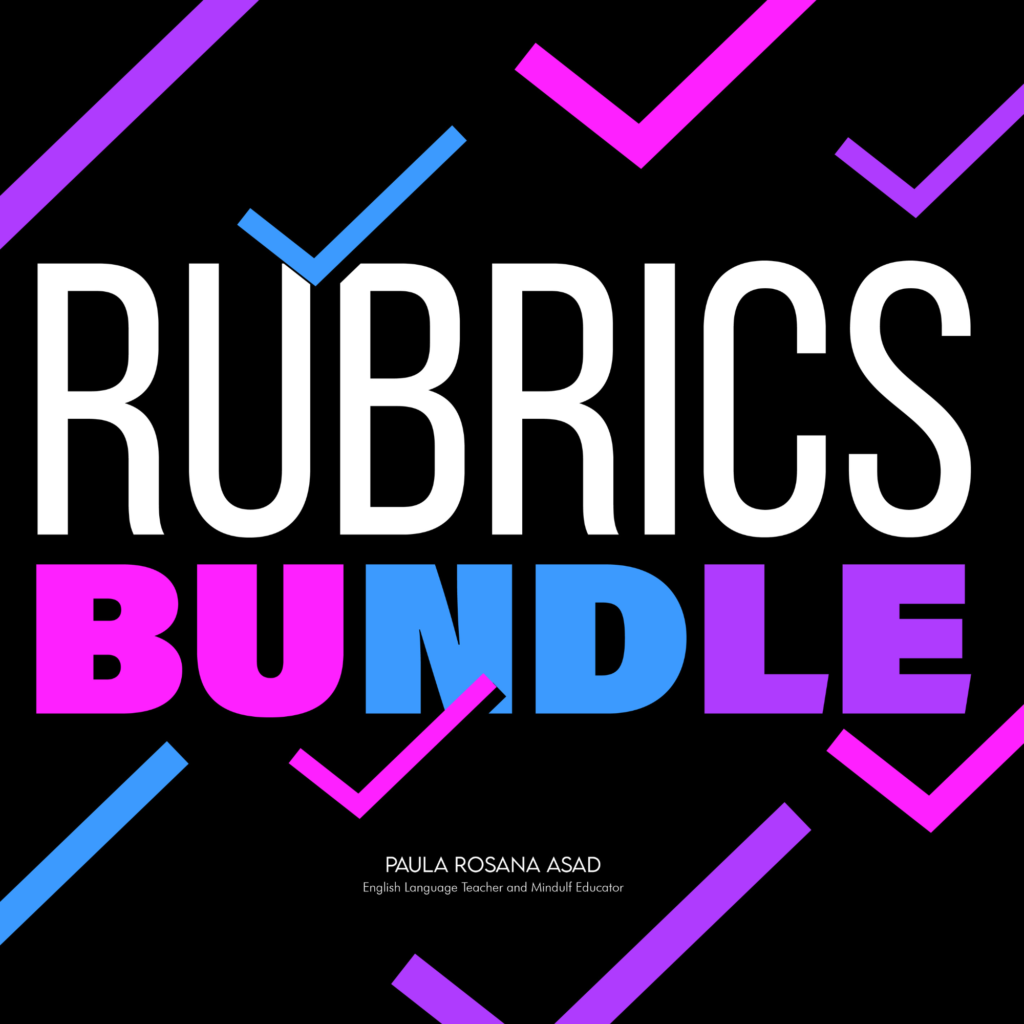Rubrics in Language Teaching
Is the stack of papers on your desk fast approaching the ceiling? Then, you need grading rubrics to assess your students! They can save us hours when used for assessment while providing timely, meaningful feedback to our learners. Moreover, if you use rubrics properly, you can increase student motivation and help them become more independent. This blog post will discuss the advantages of using them in teaching English as a second language (ESL) and English as a foreign language (EFL). It will also provide practical tips on how to select and create rubrics that are tailored to the needs of the classroom. Let’s dive in!

What are Rubrics and How are They Used in Language Teaching?
Rubrics are composed of four basic parts in which the teacher sets out the parameters of the assignment. In its simplest form, a rubric includes a task description, a scale of grades, the dimensions of the assignment (skills and knowledge involved), and descriptions of what constitutes each level of performance (feedback). All of these are laid out neatly on a grid, providing teachers with a comprehensive overview of what they’re looking for in student work. Would you like to download some rubrics for free? CLICK HERE!

Advantages of Using Rubrics in Language Classrooms
Rubrics help us save time, and understand our teaching styles and expectations better. Also, they help us give students feedback quickly and clearly. And because we talk about the rubric and grading guidelines in class, students understand the feedback better.
They can also help teachers quickly assess students’ work, and track their progress over time. In addition to this, rubrics can show the areas where the student is doing well and those they need to improve on. Furthermore, if the same criteria are used across rubrics, it can be easy to compare them and see patterns in the student’s progress. This type of self-assessment and self-improvement is key if we want pupils to become motivated, creative learners.
Another benefit is that they can help students understand what is expected of them, how they will be evaluated, and what areas they need to focus on to improve their language skills. It is amazing to see how much they progress when rubrics are timely provided and revisited during the learning process.
Rubrics in Action
I usually provide students with rubrics to grade speaking, writing, and projects. And within each skill, I also have different rubrics to assess different tasks. For instance, when it comes to speaking the rubrics vary depending on the activity my students are doing. If students are giving a presentation, I have a rubric for giving feedback on the content, structure, and delivery of the presentation. On the other hand, if students are having an informal conversation, then I have a rubric to assess other dimensions. Whatever the task, I typically provide my students with a rubric that is tailored to their situation and objectives.
Rubrics that are handy for…
Speaking: Sustained Speaking. Picture Description. Compare and Contrast. Discussion. RolePlay.
Writing: Review Writing Rubric. Narrative Writing Rubric. Article Writing Rubric. Report Writing Rubric. Essay Writing Rubric.
Projects: Research Projects. Real World Projects. Design Projects. Problem-Solving Projects. Multimedia Projects.
Running short of time to assess your EFL/ESL learners? Grab my no-prep rubrics and save time! Just click on the image and get started TODAY!
All in all, rubrics are an effective tool for assessing or grading language skills in a variety of contexts. They can help teachers provide clear and objective feedback, encourage student autonomy, customize assessments, and better prepare students for language testing. By selecting and creating rubrics that are appropriate for the learning context, teachers can empower students to take ownership of their language learning process.
Call to Action: Try out rubrics in your language classroom! Please reach out with any questions, I am happy to help!
Paula.





